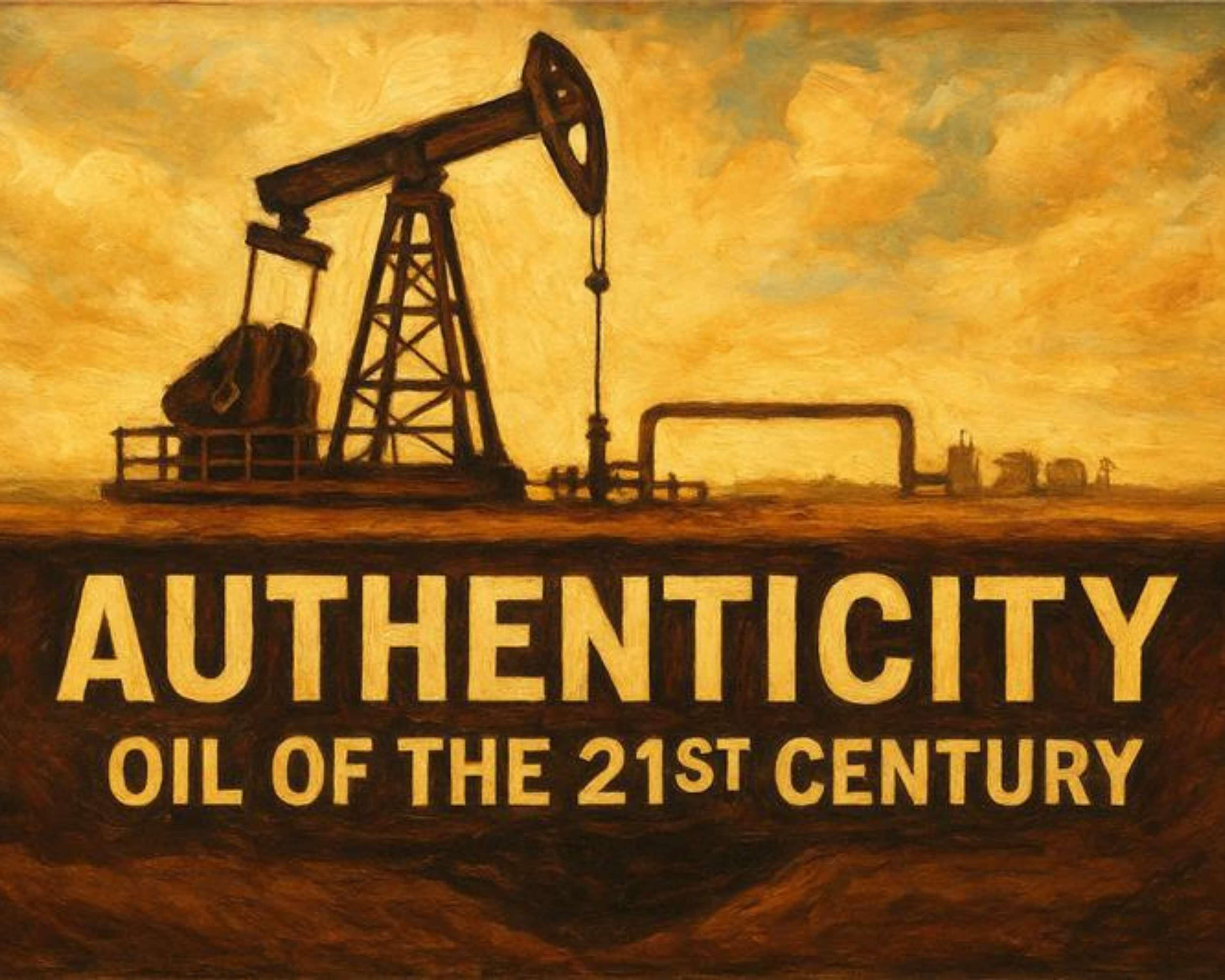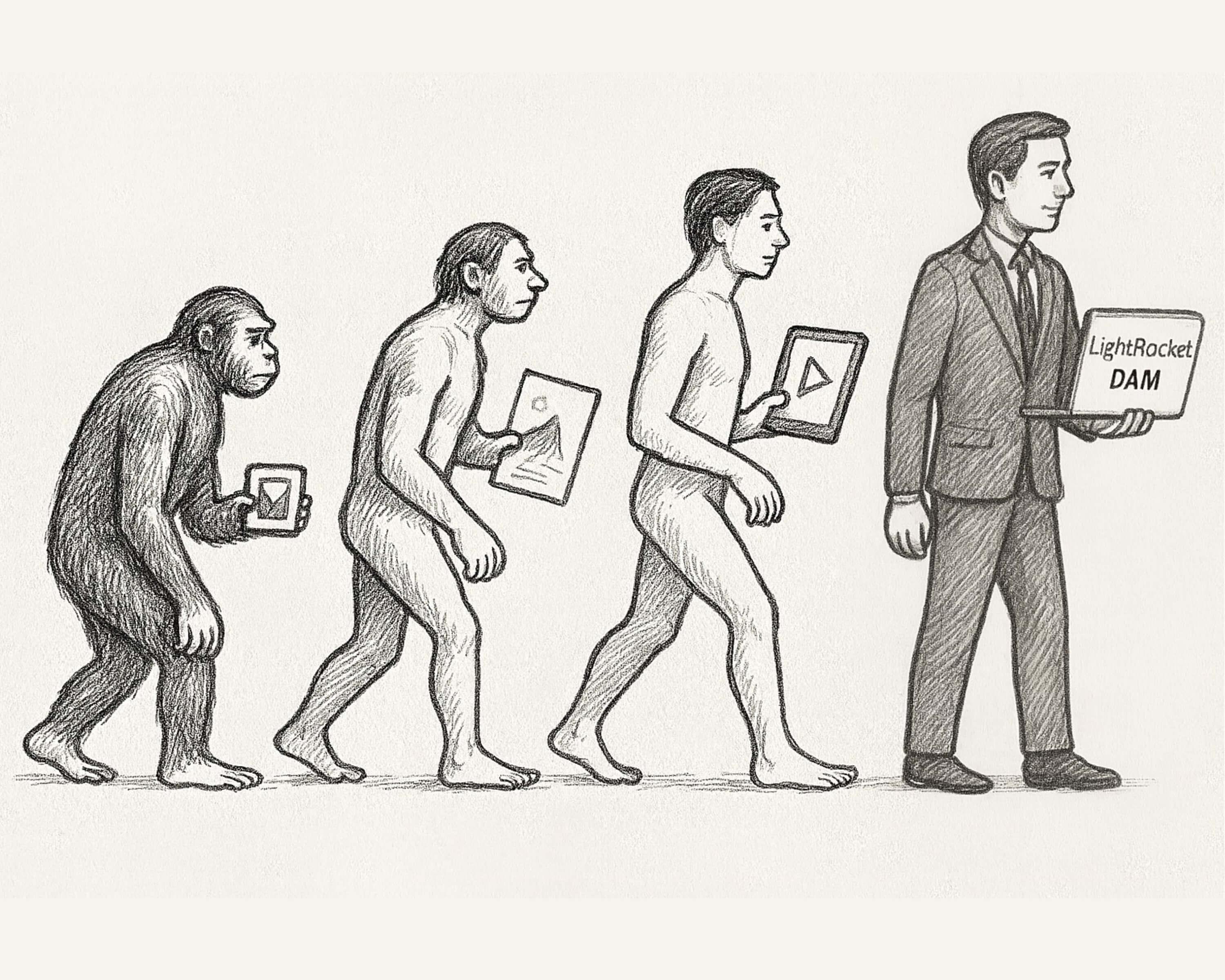
Yvan Cohen
Fri Nov 21 2025
Is Authenticity the Oil of the 21st Century?
 AI generated image
AI generated image
In the early 1990s Mark Getty, heir to the oil dynasty and founder of Getty Images, famously declared that intellectual property would be the oil of the 21st century. For a while, as Getty’s empire blossomed, it looked as though he might be right.
By the mid 2000s, however, the intrinsic value of intellectual property was already waning. In the chaotic world of the internet, intellectual property was difficult to protect. In the space of a few years, license fees for photographs sank to a fraction of what they had previously been.
Trading Personal Information for Personalised Ads
Then came the tech giants – Google, Facebook, and others – who realized there were even bigger fortunes to be made by tapping into our deepest human nature: curiosity, fear of missing out, and the insecurities which make us crave recognition.
Social media proved to be incredibly addictive. Billions of people spent many of their waking hours online, happily exchanging their private lives for free access to the daily endorphin hits delivered by being ‘liked’, ‘loved’, shared, and commented on by ‘friends’ and connections.
These companies built vast fortunes by selling slices of our private lives to advertisers, campaigners, and even governments. In a sense, we’ve paid for those dancing ads with pieces from our own lives.
The daily currency of social media is the information we exchange among ourselves: the pictures we share from our smartphones, the articles and commentary we post to our feeds.
Until recently, when we exchanged pictures or browsed a ‘friend’s’ feed, we had the feeling of accessing a broader reality. It felt enriching and informative. The data feed was digital, but there was an understanding that what we saw and read was, for the most part, a representation of real life (however opinionated), created by real human beings.
As we enter the age of AI, however, those certainties are being eroded and the idea that intellectual property could be sacrosanct, valuable even, is increasingly hard to imagine.
 Image by Google DeepMind
Image by Google DeepMind
AI Blurs the Lines Between Fact and Fiction
AI systems now scour the web for copyrighted material, absorbing it into vast learning models before spitting it back out in new forms. AI generates faces by synthesising and merging faces it has ‘seen’, to create a completely new human-looking face. Only it isn’t exactly a new face, because it is based on what already exists. It is real and fake at the same time.
The line between fact and fantasy has become blurred. We no longer know what to trust or believe. Real life looks like fantasy and fantasy looks like real life. Was that video of a house cat chasing a bear real or fake?
One could argue that AI is expanding our imaginations, opening up a virtual world of endless possibilities. Equally, one could claim that by learning all there is to learn and by parsing that information into considered responses to our queries, AI is becoming an even more valuable tool than Google. A new oracle for the modern era, with answers to literally all our questions.
We usually think of anything artificial as second best. Who wants fake turf (well, maybe some sports fans) or artificial hair? We generally prefer, and value, the real thing.
Artificial intelligence, however, is different. After all, what is intelligence? It’s not something we can hold, or touch, or weigh. It’s notoriously difficult to measure because intelligence can mean so many different things and come in so many different forms.
The alarming thing about artificial intelligence is how impressively real it is. It simulates the human brain, with connections made across global networks, resembling the relationship between neurons and synapses.
Can We Trust AI?
The responses we receive from AI are already eerily similar to those we might receive from a human, the major difference being that AI has access to almost everything there is to know. It doesn’t forget, it only gets smarter and it doesn’t get tired. That doesn’t sound like artificial intelligence, it sounds more like superior intelligence.
Which brings us to the question of trust. There has been a sense that we trust the machines and systems we have built more than we trust actual people. The ‘computer says’ is a knee-jerk response to anyone who questions an answer delivered by a computerised system – after all they’ve been tested and are designed to repeat tasks efficiently and tirelessly. It’s the inhuman nature of the computer, its inability to judge or question, that make it feel so infallible.
We trust computers to fly planes, drive cars, and tell us where to turn, because they don’t think or question. They’re passive tools, built to follow rules without judgement.
But what if computers can think, as they do now? Surely, we are faced with the same trust issues we face with humans. How can we trust an intelligent machine to always give us the expected response, to take the expected action, or be subservient even?
The AI era, might end up being the age of fear and doubt.
 AI generated image
AI generated image
Authenticity: A Valuable Commodity
Looking ahead, authenticity may become our most valuable commodity. In a world where reality can be instantly fabricated, what’s worth more than knowing what you see is real? Adrift in a sea of confected realities, we will surely turn to those who can provide assurances of authenticity.
There are already technologies designed to guarantee the authenticity of an image. The Coalition for Content Provenance and Authenticity (known as C2PA) aims to provide edit and origin assurances for digital content. Major media bodies and technology companies like the BBC and Sony are actively involved in the drive to ensure we can be confident that content presented as ‘documentary’ is authentic.
Digital Asset Management: Protecting Authenticity
DAM systems will also play an essential part in the authenticity chain. It will be essential for DAM systems to separate authentic content from that which may have been generated or manipulated by AI.
A clear border must be drawn between content which is creative in nature and may be the product of human or artificial imagination, and that which is a representation of life as it is, and events as they happened. Without establishing this division, without clearly separating visual content that is anchored in reality, we will no longer be able to trust the media.
At LightRocket, we have deep media roots. Communicating and preserving the truth is part of our ethos. We have always been focused on keeping authentic archives safe, protecting them for posterity.
AI already plays an important role in our systems - we’d be foolish to ignore its power - but our commitment to authenticity remains at the core. In time, it may well prove to be, as Mark Getty said, “the oil of the 21st century”.
Interested in seeing how DAM can protect the authenticity of your archive? Get in touch with us today to schedule a free call.
Written by Yvan Cohen | Yvan is a Co-Founder of LightRocket and has spent the past two decades immersed in the challenges and realities of digital asset management. As a professional photojournalist, Yvan uses his decades of media experience to help shape LightRocket's world-class DAM platform; focusing on collaboration, intuitive workflows and continuous innovation.
